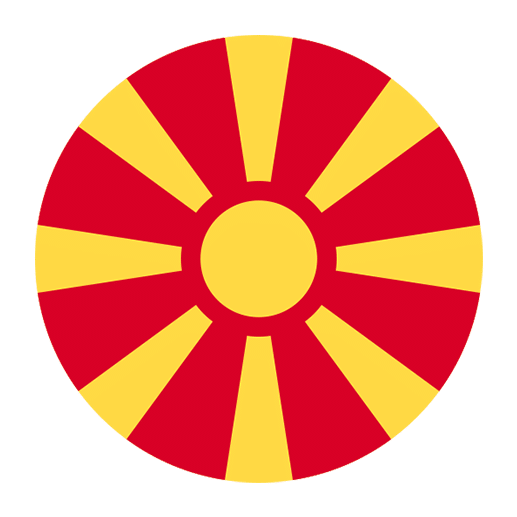Macedonian, a South Slavic language spoken predominantly in North Macedonia, is rich with unique linguistic features that set it apart from other languages within the same family, as well as from the broader Indo-European language group. For English speakers venturing into the world of Macedonian, understanding these distinctive characteristics can provide valuable insights and aid in the learning process.
Alphabet and Pronunciation
One of the first hurdles for English speakers learning Macedonian is the alphabet. Macedonian uses the Cyrillic script, which can be quite different from the Latin alphabet used in English. While some letters look familiar, others are entirely new, and even familiar-looking letters can represent different sounds.
Unique Letters and Sounds
Macedonian has several letters in the Cyrillic alphabet that do not exist in the Latin alphabet. For example:
– Ѓ (ѓ) and Ќ (ќ) represent sounds similar to the “gy” in “gypsy” and the “ky” in “queue,” respectively.
– The letter Ѕ (ѕ) represents a sound similar to the “dz” in “adze.”
– The letter Џ (џ) is pronounced like the “j” in “judge.”
Pronunciation in Macedonian is generally more consistent than in English. Each letter typically corresponds to a single sound, which can make learning to read Macedonian somewhat easier once the alphabet is mastered.
Stress and Intonation
Stress in Macedonian words is not fixed and can occur on any syllable, which can be challenging for English speakers who are accustomed to more predictable stress patterns. Stress can change the meaning of words, so it is important to learn the correct pronunciation from the beginning.
Grammar and Syntax
Macedonian grammar exhibits several features that may be unfamiliar to English speakers. Some of these features are shared with other Slavic languages, while others are unique to Macedonian.
Definite Articles
Unlike English, which uses separate words for definite articles (the), Macedonian uses suffixes attached to the noun. There are three definite articles in Macedonian, depending on the position of the object relative to the speaker:
– The suffix -от (-ot) is used for objects that are close to the speaker.
– The suffix -та (-ta) is used for feminine nouns.
– The suffix -то (-to) is used for neuter nouns.
– The suffix -те (-te) is used for plural nouns.
For example, the word for “book” is “книга” (kniga). To say “the book,” you would use “книгата” (knigata).
Case System
Macedonian, unlike many other Slavic languages, has largely lost its case system. While this simplifies learning in some respects, it also means that word order can be more rigid than in other Slavic languages, where case endings provide clues to a word’s grammatical role. Instead, Macedonian relies more heavily on prepositions and word order to convey meaning.
Verb Conjugation
Verbs in Macedonian are conjugated to agree with their subjects in person and number, similar to English. However, Macedonian verbs also convey additional information through their conjugation patterns, such as aspect (completed or ongoing action).
The verb system in Macedonian is characterized by:
– Three tenses: past, present, and future.
– Two aspects: perfective (completed action) and imperfective (ongoing or repeated action).
For example, the verb “to write” in its imperfective form is “пишува” (pišuva), while the perfective form is “напише” (napiše).
Nouns and Gender
Like many other Indo-European languages, Macedonian nouns have grammatical gender. There are three genders: masculine, feminine, and neuter. Each gender has its own set of endings and agreement rules for adjectives, pronouns, and verbs.
Gender Endings
– Masculine nouns often end in a consonant (e.g., “учител” – učitel, “teacher”).
– Feminine nouns typically end in -а (e.g., “жена” – žena, “woman”).
– Neuter nouns usually end in -о or -е (e.g., “дете” – dete, “child”).
Gender affects not only noun endings but also the form of adjectives and past tense verbs. For instance, the adjective “good” changes as follows:
– добар (dobar) for masculine nouns.
– добра (dobra) for feminine nouns.
– добро (dobro) for neuter nouns.
Adjectives and Adverbs
Adjectives in Macedonian agree with the nouns they modify in gender, number, and definiteness. This agreement can be a challenge for English speakers, who are not accustomed to such extensive adjective-noun agreement.
Comparative and Superlative Forms
The comparative form of adjectives in Macedonian is usually formed by adding the suffix -и (i) to the adjective, while the superlative is formed by adding the prefix нај- (naj-).
For example:
– “добар” (dobar, good) becomes “подобар” (podobar, better) in the comparative.
– “најдобар” (najdobar, best) in the superlative.
Adverbs in Macedonian are typically formed by adding the suffix -о (o) to the adjective. For example, “бавно” (bavno) means “slowly,” derived from “бавен” (baven, slow).
Pronouns
Macedonian pronouns can be quite different from their English counterparts, especially in terms of their forms and uses.
Personal Pronouns
Personal pronouns in Macedonian have different forms depending on their grammatical case (subject, object, etc.). Here are the subject forms for the singular and plural:
– I: јас (jas)
– You (singular informal): ти (ti)
– He: тој (toj)
– She: таа (taa)
– It: тоа (toa)
– We: ние (nie)
– You (plural or formal): вие (vie)
– They: тие (tie)
Reflexive Pronouns
Macedonian also has reflexive pronouns, which are used when the subject and object of the verb are the same. For example, “се” (se) is a common reflexive pronoun, as in “се мие” (se mie, “he/she washes himself/herself”).
Numbers and Counting
Macedonian numbers are straightforward but can take some getting used to. Here are the cardinal numbers from one to ten:
1. еден (eden)
2. два (dva)
3. три (tri)
4. четири (četiri)
5. пет (pet)
6. шест (šest)
7. седум (sedum)
8. осум (osum)
9. девет (devet)
10. десет (deset)
Ordinal numbers are formed by adding the suffix -ти (ti) to the cardinal numbers, with some variations. For example:
1. прв (prv, first)
2. втор (vtor, second)
3. трет (tret, third)
Prepositions and Conjunctions
Prepositions in Macedonian, like in English, indicate relationships between words in a sentence. Some common prepositions include:
– во (vo, in)
– на (na, on)
– со (so, with)
– за (za, for)
Conjunctions are used to connect clauses or sentences. Some common conjunctions include:
– и (i, and)
– или (ili, or)
– но (no, but)
– затоа што (zatoa što, because)
Common Expressions and Idioms
Learning common expressions and idioms can greatly enhance your understanding and fluency in Macedonian. Here are a few examples:
– “Како си?” (Kako si?) – “How are you?”
– “Добро утро” (Dobro utro) – “Good morning”
– “Лека ноќ” (Leka noќ) – “Good night”
– “Ти благодарам” (Ti blagodaram) – “Thank you”
Idioms can be particularly challenging as their meanings are not always literal. For example:
– “Да фрлиш око” (Da frliš oko) – Literally “to throw an eye,” meaning “to keep an eye on something.”
– “Да го најдеш крајот” (Da go najdeš krajot) – Literally “to find the end,” meaning “to finish something.”
Conclusion
Delving into the Macedonian language reveals a tapestry of unique linguistic features that offer both challenges and rewards for English speakers. From mastering the Cyrillic alphabet to navigating complex verb conjugations and noun-adjective agreements, each aspect of Macedonian provides a window into a rich cultural and linguistic heritage. By understanding these distinctive elements, learners can gain a deeper appreciation for the language and enhance their ability to communicate effectively. Whether you are drawn to Macedonian for personal, academic, or professional reasons, embracing its unique characteristics is the key to unlocking its beauty and nuance.

